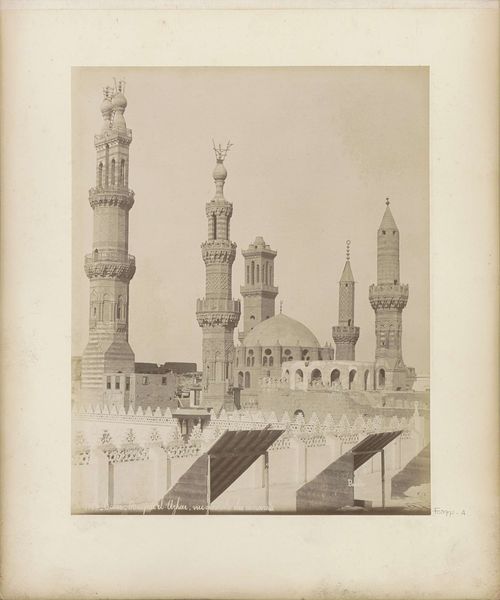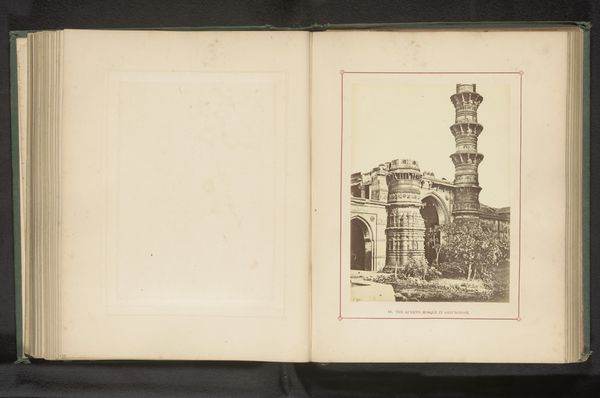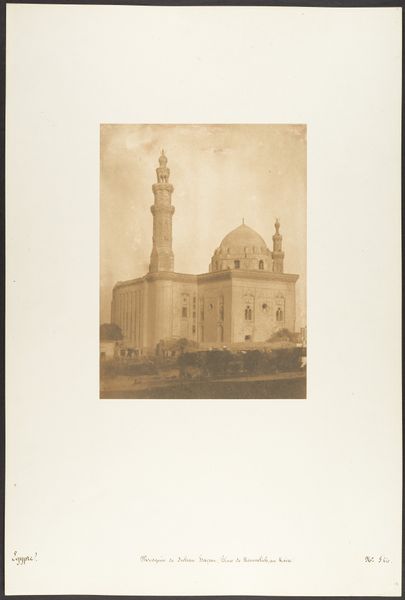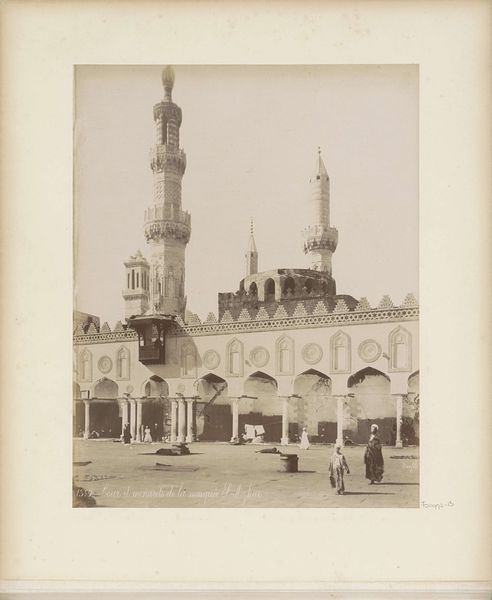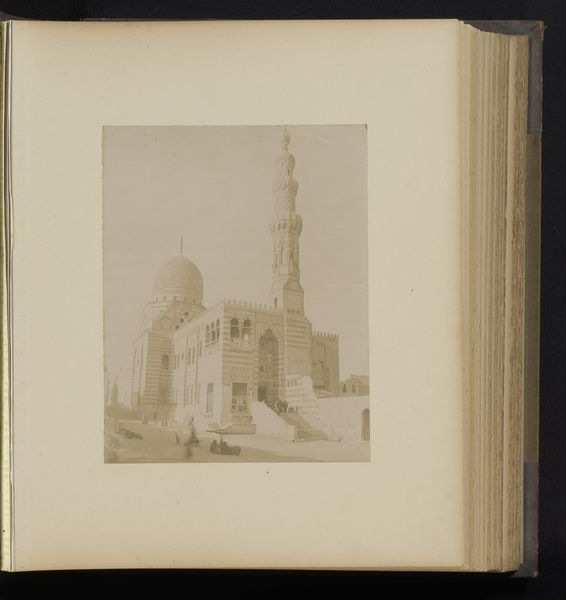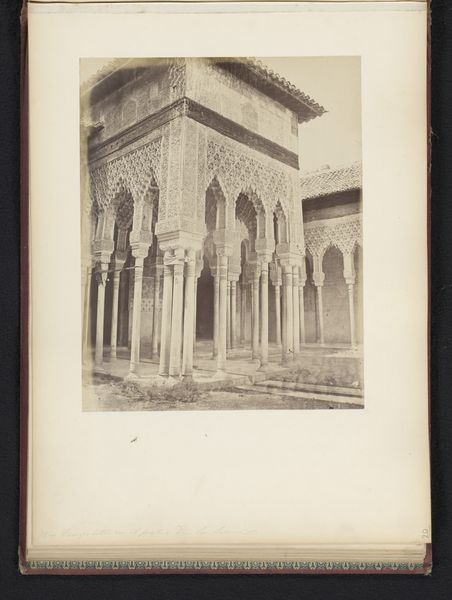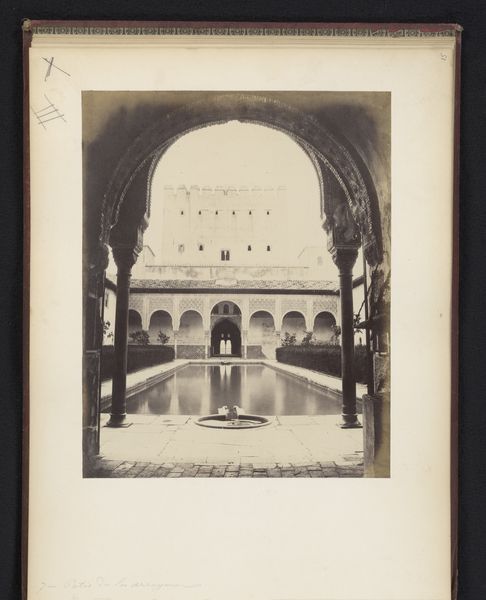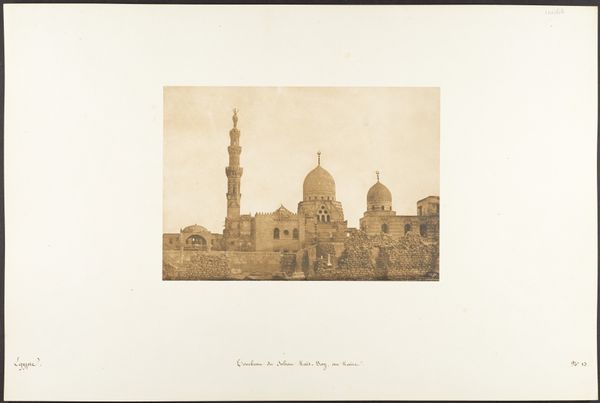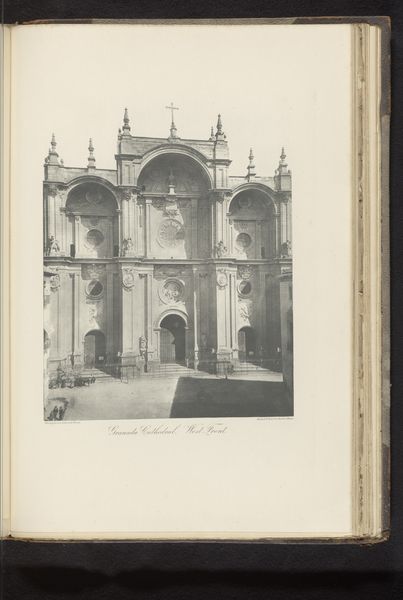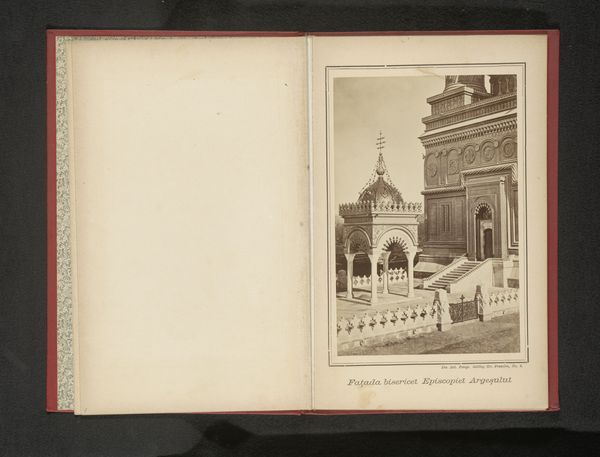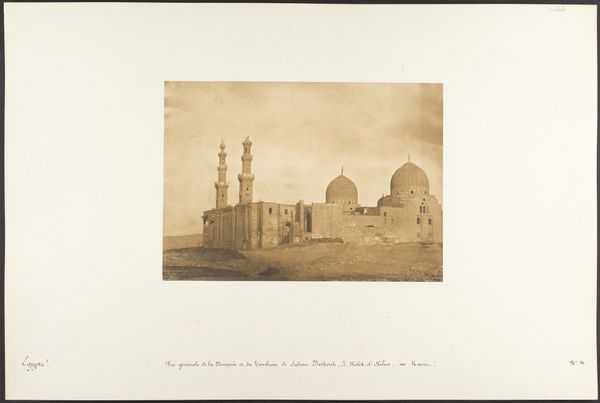
photography, gelatin-silver-print
#
photography
#
gelatin-silver-print
#
cityscape
#
islamic-art
Dimensions: height 276 mm, width 217 mm
Copyright: Rijks Museum: Open Domain
Curator: This gelatin-silver print, titled "Gezicht op de Al-Azhar-moskee in Caïro," offers us a view of the esteemed Al-Azhar Mosque. Dating approximately from 1870 to 1910, it’s the work of C. & G. Zangaki. Editor: The image, bathed in a kind of sepia glow, immediately brings to mind the idea of legacy, of time and the endurance of faith. The minarets rise so confidently into that bleached sky, but also give a feeling of colonial orientalism framing how we, in the West, have viewed such structures. Curator: Precisely. This photo existed, of course, within a broader colonial context. The Zangaki brothers, of Greek origin but working in Egypt, produced images catering to European tastes, shaping perceptions of Egypt and the Middle East. Editor: And those perceptions come laden with power dynamics. It’s not merely a photograph; it's a constructed vision. I look at it, and I wonder whose gaze is truly being satisfied here? Is it a genuine attempt at documenting the mosque, or a romanticized portrayal aimed at external viewers? Curator: The photograph’s value also lies in its documentary aspect, revealing Cairo’s urban fabric at the time. The intricate architectural details, even within the constraints of the photographic technology then available, offer insights into Islamic artistry. Editor: While acknowledging its architectural merits, it's hard to overlook how these images were circulated, shaping biased views, perpetuating stereotypes, and turning cultural landmarks into commodities. The framing is crucial: who gets to tell whose story, and how? Curator: That critical viewpoint is vital. The Al-Azhar Mosque isn't just a pretty picture; it’s a place of worship, a center of learning, a nexus of social and political importance within Egypt and the larger Islamic world. Understanding its true value demands something more than a fleeting glance. Editor: I agree. Art must serve not just as an aesthetic pleasure but as a launchpad for deeper engagement and awareness, provoking essential questions of power, identity, and representation. It needs a historical re-imagining, rather than an aesthetic gaze. Curator: Precisely, an engagement beyond surface beauty towards critical contextualization. Editor: Exactly. And by viewing it with an engaged perspective, perhaps we start to unpack our own inherent prejudices.
Comments
No comments
Be the first to comment and join the conversation on the ultimate creative platform.
